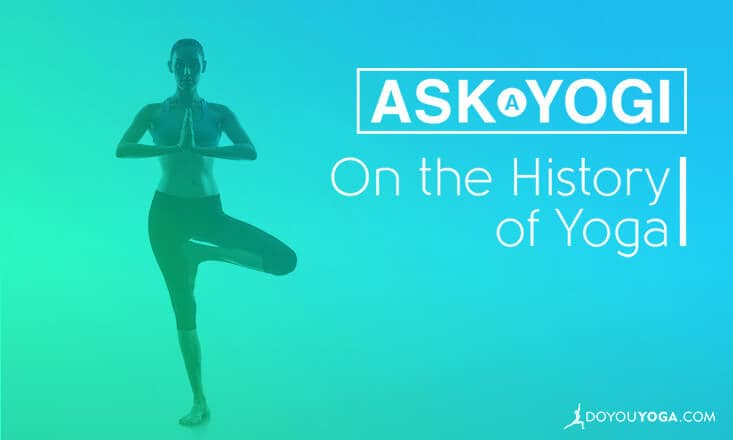Yoga as we think of it today and yoga as the ancient practice are vastly different things. When we talk about the history of yoga, we have to look back thousands of years to a practice that came about as a way to reach enlightenment, or bliss.
Yoga today is a largely physical practice with many different aims, one of which might be enlightenment, but the focus has greatly shifted towards the physical. Understanding the history of yoga helps to put things in perspective and create a deeper connection to the root of yoga, which will hopefully inspire your practice to be more than a source of exercise.
Between 2000 and 500 BCE
Much of what we know about ancient yoga comes from scriptures, or at least what has survived from over 5,000 years ago. The earliest known mentions of yoga from textual sources were in 2000 BCE in the Indus Valley.
Between 2000 and 500 BCE the Vedas were created. These sacred Sanskrit texts rooted in the Hindu tradition spoke of breath control and devotional mantras.
700-100 BCE
The most renowned version of the scriptures, the Bhagavad Gita, is written. It outlines the ethical values of yoga including sacrifice of the ego, karma, and wisdom.
100-500 BCE
Between 100 and 500 BCE, the Yoga Sutras, or the philosophy of yoga as we know it today was developed by Patanjali, an Indian sage.
His Sutras include the Eight Limbs of Yoga, which remains a cornerstone of yoga teachings today. The limbs include the physical practice, meditation, and outlines how we should treat and care for ourselves and others.
1700-1800 CE
The physical yoga practice is developed as a way to rejuvenate and purify the body and extend life span. It was at this time that Hatha yoga originated.
1900 – Today
Yoga makes its way to the West.
1893 — Yoga master Swami Vivekanand shared his teachings at the Parliament of Religions in Chicago.
1931 — T. Krishnamacharya is invited to teach yoga at the Sanskrit College in Mysore, India.
1930s – Krishnamacharya taught his version of Hatha yoga to three students: B.K.S. Iyengar, T.K.V. Desikachar, and Pattabhi Jois, who are credited with spreading the modern version of Hatha yoga throughout the world.
1947 — Indra Devi opened her yoga studio in Hollywood.
From there, yoga spread like wildfire around the western world. Today, there are hundreds of varieties of yoga stemming from the traditional Hatha practice, such as Ashtanga and Vinyasa yoga. Many teachers have trademarked their own versions like Bikram and Forrest Yoga. Modern gyms and studios offer Power yoga, Hot yoga, and Yogalates. There's yoga for kids, yoga for seniors, yoga for couples… yoga for everyone!
The wonderful thing about the saturated yoga market is that it makes the practice readily available to anyone who wants to give it a try. The downfall of the popularity, is that the history of the practice is often brushed under the rug.
While I would never discredit new forms of yoga for their many wonderful physical benefits, it is the deeply rooted spiritual history of yoga that allows students to tap into something a little deeper.
Yoga came about as a way to reach ultimate bliss, and do to so, we have to stay true to the ancient fundamentals.
Did you learn something you didn't know before about yoga? What is your favorite thing about the practice? Share with us in the comments below!


